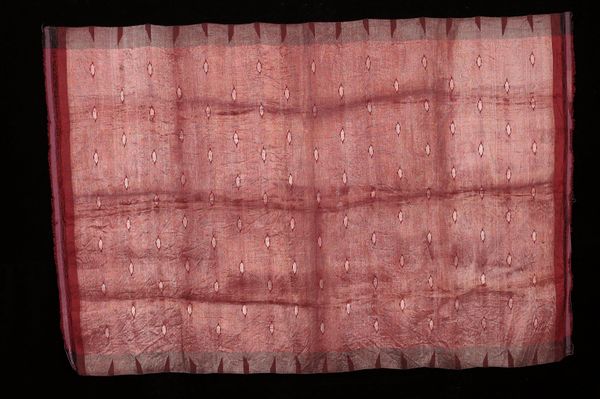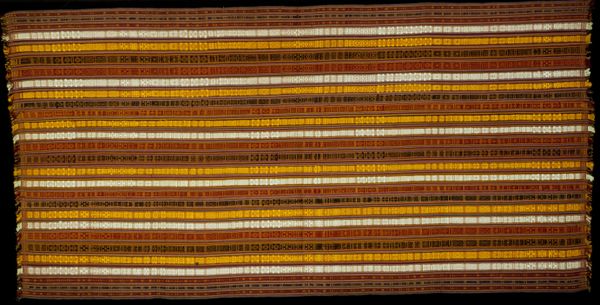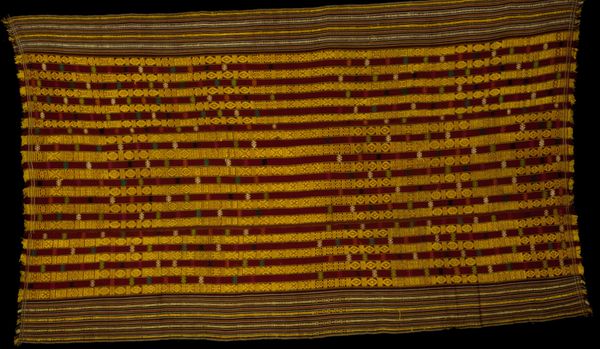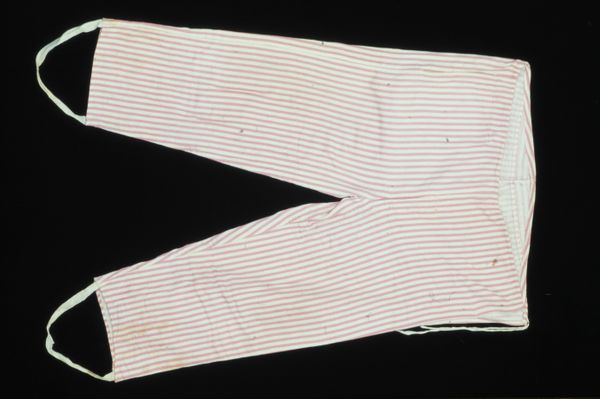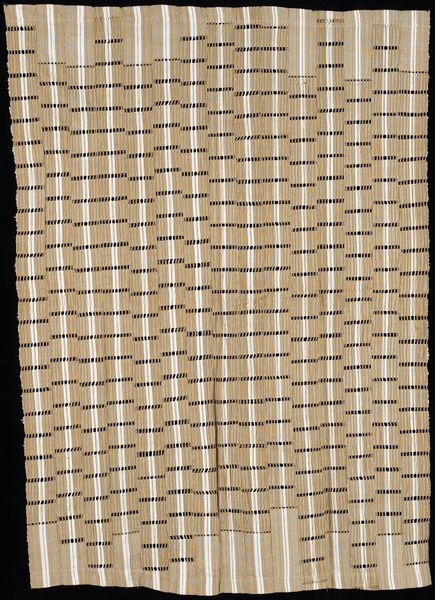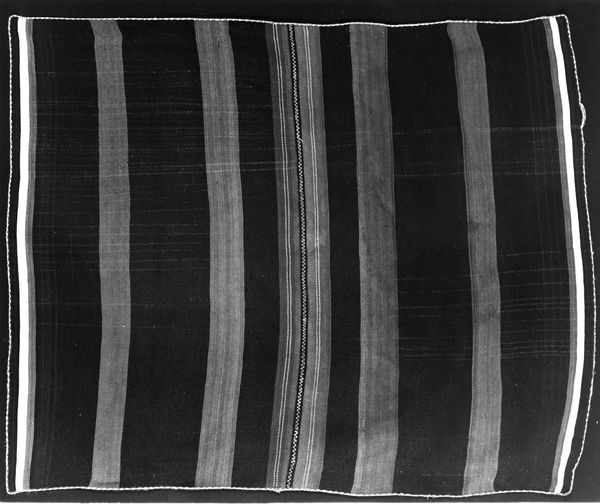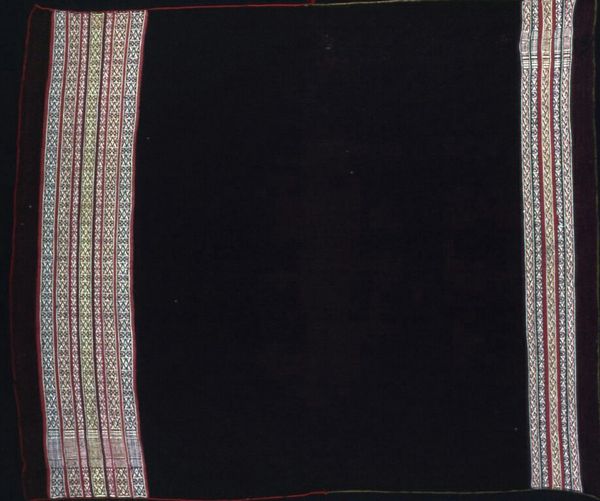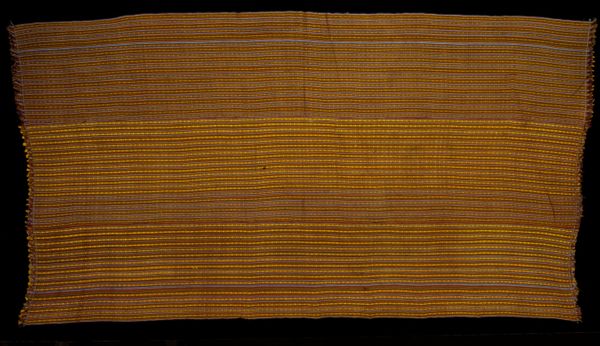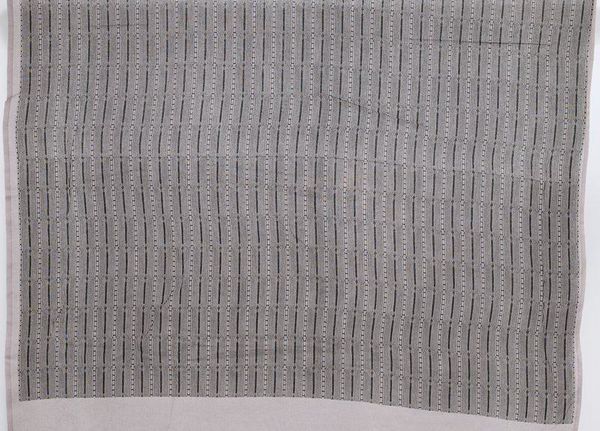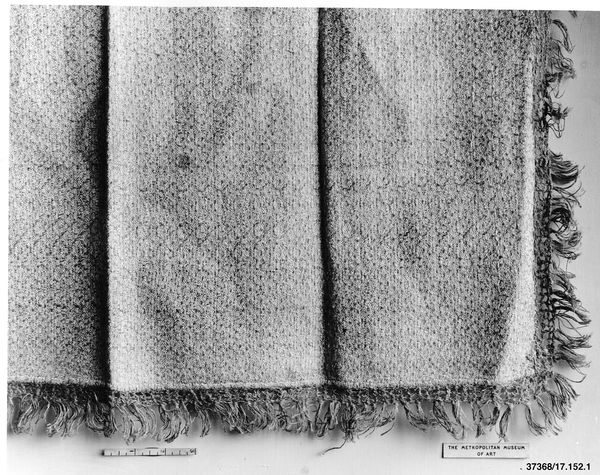
fibre-art, weaving, textile, cotton
#
fibre-art
#
weaving
#
textile
#
geometric
#
cotton
Dimensions: 134.5 × 92.5 cm (53 × 36 1/2 in.) Warp repeat: 14 cm (5 1/2 in.)
Copyright: Public Domain
This textile panel was woven by a Mangbetu artist, most likely in the Democratic Republic of Congo. The material is raphia, a fiber derived from palm trees, which has a lovely silky texture when processed. Look closely, and you'll see a grid pattern of light and dark bands. This was achieved through a laborious process of resist-dyeing. Sections of the woven cloth were carefully tied off, then submerged in a dye bath. The tied sections remained light, while the rest of the fabric absorbed the pigment. The evenness of the pattern speaks to a high degree of skill. Textiles like this weren't simply decorative. They served as a form of currency, a marker of status, and even as shrouds for the deceased. The time and skill required to produce them imbued them with social and cultural value, far beyond mere utility. Considering the textile's materials, making, and context encourages us to look beyond conventional notions of fine art, and recognize the artistry inherent in everyday objects.
Comments
No comments
Be the first to comment and join the conversation on the ultimate creative platform.
